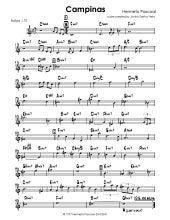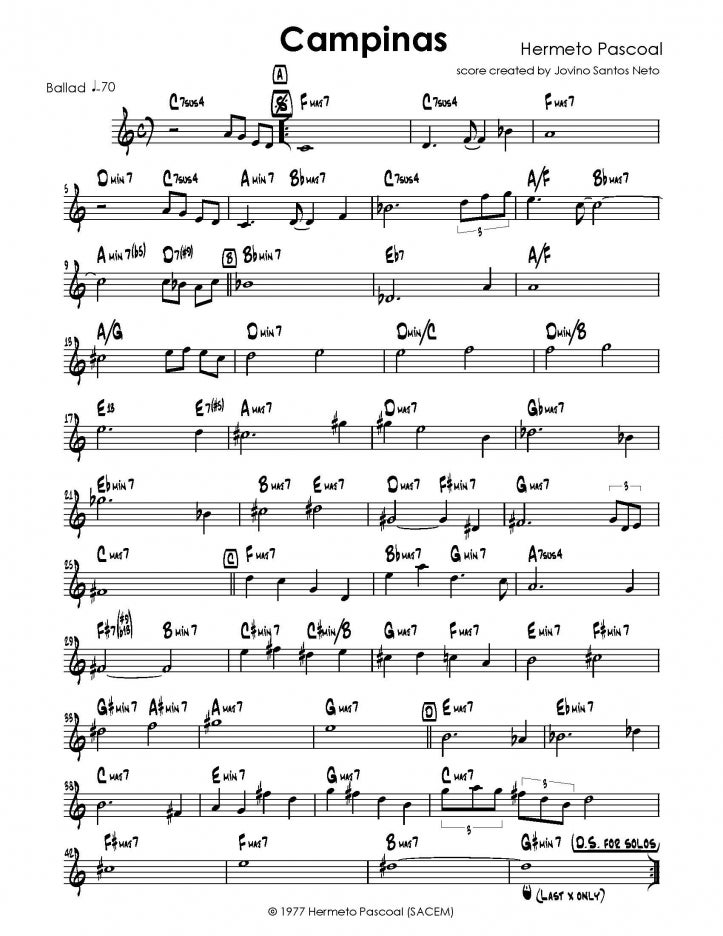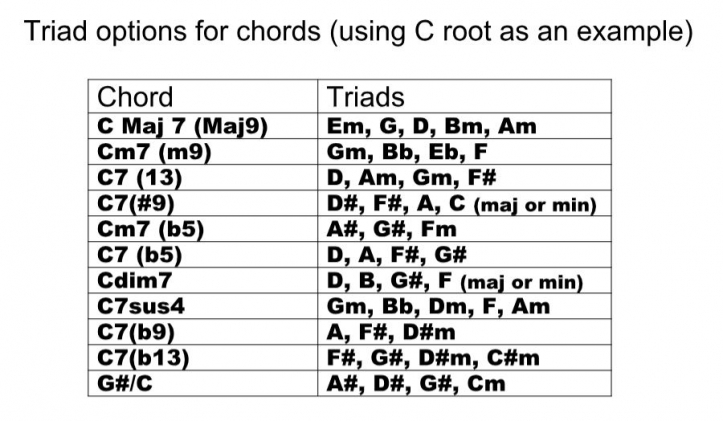Notes from the Jabour School: Multidimensional harmonic models for improvisation, composition and arrangement from Hermeto Pascoal’s Grupo in Rio de Janeiro

Harmony is the Mother, Rhythm is the Father and Melody is the Offspring
-Hermeto Pascoal
My first 15 years as a full-time musician were spent in Hermeto Pascoal’s Grupo in Rio de Janeiro. This ensemble was the core of what became known as ‘The Jabour School’, named after the neighborhood in Rio where Hermeto and all the musicians in his ensemble lived in the 1980s and 1990s. I was the pianist, flutist, record producer and road manager for the band. The experience of intense rehearsals for 30 hours each week, plus the hundreds of concerts and recordings we did together, allowed myself and my colleagues (Itiberê Zwarg (bass), Carlos Malta (woodwinds), Marcio Bahia (drums), and brothers Pernambuco and Fabio Pascoal (percussion)) a direct pathway to the self-taught and intuitive musical genius of Hermeto, and to observe how he conceived and explained to us the musical entities of harmony, melody and rhythm, in addition to being a consummate artist on piano, flute, saxes and a wide variety of artisanal instruments, such as kettles, tubes, sewing machines and much more. In our rehearsals and concerts, we also witnessed how Hermeto would use different methods to describe a single musical concept to the six musicians of our ensemble, each of whom with different musical backgrounds and training. During those years with Hermeto I learned practical ideas which shaped my own musical growth which I hope I can use to inspire others. In this article I will describe the basics of Hermeto’s universal approach to harmony, with some practical ideas for individual development of the harmonic sense.
On the first day I met Hermeto in 1977, he gave me a sheet of music paper with written chord symbols. Those were the changes to his theme ‘Campinas’, [Figure 1]. Over the course of several years, this piece was used almost on a daily basis as the material over which we practiced the art of improvisation. The first thing that Hermeto taught us when improvising over chords to ‘Campinas’ was to write above each chord symbol a number of triad options. So, if a chord was a C major 7th, we would write the symbols for G, E minor, D and B minor. These triads are components of the C Lydian mode. If a chord was a C minor 7th, we would write the triads Eb, Bb, D minor, F. These are components of the C Dorian mode. For each chord type there are between 2 and 5 triad options to be explored. However, instead of having us learn linear scales and modes, Hermeto would inspire us to create simple, intuitive melodies based on those triads. He also remarked that there was not a simple hierarchy of triads, no sequence or order of importance. So, we could be playing an E minor or a D major melody over the C major chord, which blurred the more traditional aspects of the harmony, in which hierarchy is a given premise.
FIGURE 1:

For me, with a then limited knowledge of music theory and hardly any experience improvising over chord changes, this was a completely new approach. It meant I did not have to engage in linear thought processes, leaving space for my intuition to operate while dealing with simple melodic figures. Prior to joining Hermeto’s Grupo, I had studied biology and was accustomed to the logical, Cartesian approach of the scientific method. Learning music with Hermeto and the Grupo proved to be one of my biggest challenges to overcome. Over time, the members of our ensemble became so familiar with this concept that we no longer had to write the triad options over the chords. The whole process became instantaneous and directly connected to the quick flash of reflex. Not the automatic, mindless reflex of habit, but the mindful, creative reaction that came to us organically when moving over a changing harmonic landscape. Hermeto’s harmonic language that he used in his compositions, arrangements and improvisations provided us with ample material with which to practice. His use of chord progressions was always inspiring, surprising and innovative.
After moving to the US in 1993, I saw how most schools and music instruction books focus almost exclusively on the linear approaches of scales and modes as gateways to improvisation. These approaches tend to result, in my opinion, in mechanical solos that fail to connect with a musician’s intuition. What I hear is a lifeless and flat flow of notes without melodic coherence. Traditional harmonic studies often describe wide intervals, such as ninths, elevenths and thirteenths, but if intervals can be imagined in orbital shapes rather than linear distances, we can then visualize the same long intervals as inversions of shorter steps, which come in pairs: second/seventh, fourth/fifth, third/sixth. This system brings the intuitive perception of intervals and chords to exist within the human hand, without the need for any quantity greater than five. We use our hands to play instruments, and it is intuitively possible to connect our 10 fingers as interval and chord builders, even if you are playing a melodic instrument. The way to harmonic conscience is built on intuitive major and minor triads. They exist in our mind’s ear as gestures and notations which have voices, just as easily recognized as the voices of our friends and family. Even though we tend to treat chords as individual entities or motionless objects, in reality they connect to and inform all the musical material surrounding them, so it would be more appropriate to consider chords as verbs, (which denote actions), rather than nouns, which denote objects. We can then visualize any chord as a cloud of possible musical actions, with an ‘atmosphere’ of triads surrounding it. I found it convenient to use three dimensional images as a visual aid to enable the multi-sensorial perception of harmony.
Music, being the art of placing sounds over time, is of course a four-dimensional sensory experience for both musicians and listeners, but the point is that, by employing three-dimensional objects as images of reference, we are one dimension away from the flowing nature of the musical experience, rather than the two-dimensional degrees that separate the linear objects of scales, modes and arpeggios from the immersive musical universe. Furthermore, I find that even better than using abstract Platonic solids as sources of imagery for musical reference, we can instead focus on shapes commonly found in Nature. Trees, for instance, can very effective models for conceiving harmonic entities. As land-dwelling beings, we think of trees as stationary objects, but somewhere in the inner core of our brains, we can still visualize trees as stations along a pathway of travel like our canopy-dwelling ancestors.
My ‘Arboreal Concept’, in which you can use images of trees as visual representation of chordal entities, holds potential for all students of harmony, because imagining trees is easy for most. Like trees, chords have roots, the notes which ground them to a spot which acts like a gravity well, pulling other possible notes to the root’s sphere of influence. The type of chord is indicated by the third and seventh intervals from the root, and this can be considered a trunk. For our purposes here, we can recognize six basic types of chords:
- Major (major third, major seventh)
- Minor (minor third, minor seventh)
- Dominant seventh (major third, minor seventh)
- Seventh with a suspended fourth (perfect fourth, minor seventh)
- Diminished seventh (minor third, diminished seventh)
- Half-diminished seventh (minor third, diminished fifth)
If we imagine the sensations which each of these chord types elicit, we can define their organoleptic properties: their aural impressions, their tactile properties (which gestures musicians employ to produce their sounds), and their visual representation (how we notate and read the chords, either by conventional notes or by chord symbols). Some of those will be unique to each individual, others will be easily shared with other musicians.
Of course, there are more chordal varieties beyond these basic six, but they can be heard as subtypes of the basic forms and can easily be represented by the use of the slash, which is the equivalent of a hinge in harmony. For example, a C major seventh with a raised fifth - Cmaj (#5) - can be felt and written as an E triad over a C root (E/C). This chord can be perceived from the bottom root (C) up, as it is in traditional harmonic studies, or from the top down, using the canopy triad (E) as a source of melodic creativity. [Figure 2]
FIGURE 2:

The important factor to keep in mind is that of the three basic characteristics of chord sensations (aural, tactile and visual), the aural one is by far the quickest and most direct. Our perception of sound can distinguish subtle variations that happen within 1/300th of a second, while our visual acuity is limited to 1/25th of a second. The speed of our response to tactile sensations sits between the aural and the visual. The neural pathways that lead from the ear to the brain are much more direct than the ones connected to our eyes. Even though we are primarily driven by vision, our sense of hearing remains as the most basic universal way to connect to the world around us. As musicians, being aware of the environment inhabited by music entities as a vibrating field of acoustical energy is crucial for our growth as performers, composers and arrangers.
This awareness is what I call ‘The Tool’: an intuitive response that composers and improvisers develop by developing the coordination between their ears, touch and vision. Some only have one or two of these skills and never develop the other(s), but to be considered a universal musician in the sense that Hermeto Pascoal teaches, these three skills need to be constantly undergoing further questioning, study and refinement, for the lifetime of a musician. The harmonic deployment of triads, or triangle-shaped sound objects, leads to the inner building of three-dimensional patterns, which can assume the most varied shapes, geometrical, symmetrical, organically arraigned like leaves sprouting from a stem. This tool can be used as a means to create spontaneous melodies over chord changes, but also, in an inversion of its shapes, as a method to harmonize or re-harmonize melodic lines.





